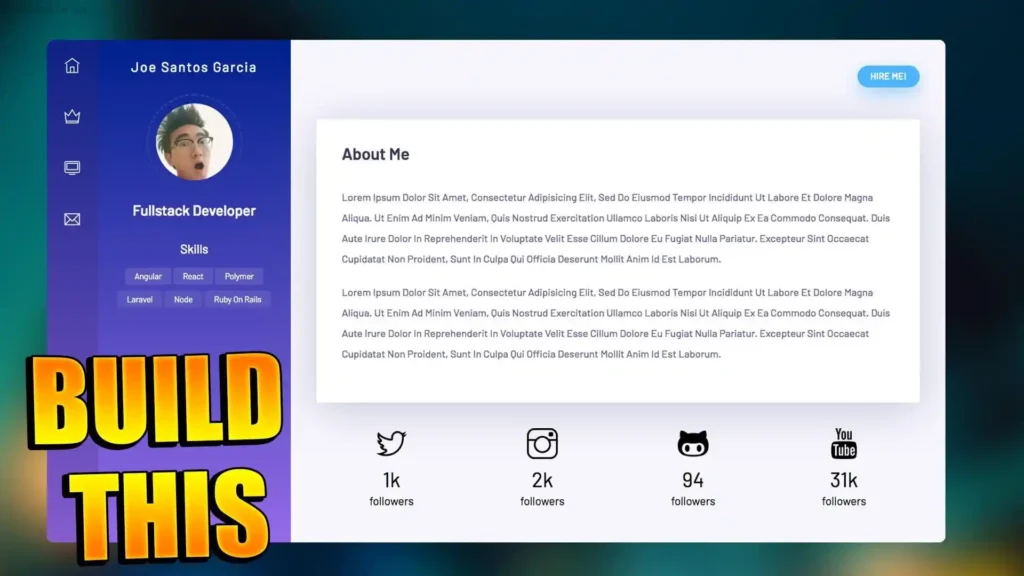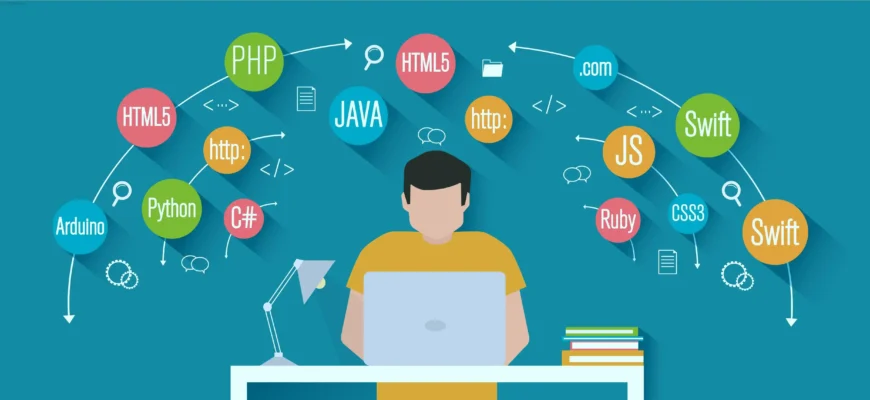Building a website from scratch can seem like a monumental task. It’s one of those things where you think you need to be a tech wizard, but the truth is, you don’t. I’ve seen people of all ages—young and old—build websites, from hobbyists to professionals, using a mix of tools and skills. Whether you’re looking to create a simple blog or an intricate e-commerce platform, the process can be broken down into manageable steps. And in this guide, I’m here to share not only the how-to but also the mistakes to avoid, backed by statistics and research, to make sure your website-building journey is as smooth as possible.
Why You Should Learn How to Build a Website
Let’s face it: in today’s world, having a website is pretty much a necessity. Over 60% of businesses in 2024 (according to a report by Clutch) consider their website to be their most important marketing tool. Whether you’re running a business, building a personal brand, or starting a blog, a well-designed website is often the first impression you give potential customers, clients, or visitors.
Besides, building a website has never been easier, and with the right tools, you can get started without having to be a full-fledged programmer. This guide will help you understand the essential steps involved in creating a website from scratch.
1. Understanding Your Goal: Why Do You Need a Website?
Before you dive into coding or choosing a platform, take a step back. What do you want your website to achieve? Knowing your goals is crucial because it will guide all your future decisions. Is it:
- A personal blog where you share your thoughts and experiences?
- A business site for showcasing your services or products?
- An online store where you’ll sell goods?
- A portfolio to display your creative work?
Answering this question will guide your choices in design, features, and functionality. A blog, for example, doesn’t need e-commerce features, while an online store needs secure payment processing and product catalog management.
Tip: If you’re unsure, start by sketching a simple wireframe or list of features you want on your site.
2. Choosing the Right Platform
This is where many beginners get stuck. You’ll find a ton of options out there, each with its pros and cons. Let’s break down a few of the most popular choices.
- Website Builders (Wix, Squarespace, WordPress.com, Weebly): These are drag-and-drop platforms that allow you to build websites quickly. Great for beginners and those who don’t want to deal with coding.
- Pros: User-friendly, no coding required, tons of templates.
- Cons: Limited flexibility, can be more expensive over time.
- Content Management Systems (CMS) (WordPress.org, Joomla, Drupal): WordPress is by far the most popular CMS, powering over 40% of all websites on the internet. It gives you more control and flexibility than website builders.
- Pros: Free (if self-hosted), highly customizable, large plugin ecosystem.
- Cons: Requires hosting, can be tricky to set up at first.
- Custom-Built (HTML/CSS/JavaScript): For the purists or professionals, writing everything from scratch gives you total control over your website’s design and functionality.
- Pros: Full control, lightweight, no restrictions.
- Cons: Time-consuming, requires knowledge of coding.
3. Choosing a Domain Name and Hosting
Your domain name is your website’s address on the internet (e.g., www.yoursite.com). It’s vital to choose something that reflects your brand or topic. When selecting a domain name, remember:
- Keep it short and easy to remember.
- Avoid complicated spellings that might confuse visitors.
- Consider keywords related to your site (for SEO benefits).
- Use a reputable domain registrar like GoDaddy, Namecheap, or Google Domains.
Once you’ve got your domain, you’ll need hosting to store your website’s files. A few options include:
- Shared hosting (e.g., Bluehost, HostGator): Affordable, suitable for beginners.
- VPS hosting (e.g., InMotion Hosting, DigitalOcean): More powerful and flexible.
- Managed hosting (e.g., WP Engine, Kinsta): Great for WordPress users who want to focus on content, not technical details.
Tip: If you’re using a platform like Wix or Squarespace, hosting is included. But if you’re using WordPress, you’ll need to choose a hosting provider.
4. Designing Your Website
Here’s where the fun begins! A well-designed website makes a huge difference in user experience (UX) and conversion rates. Research shows that 38% of people will stop engaging with a website if the content or layout is unattractive (Adobe, 2019).

- Choose a template/theme: If you’re using a website builder or CMS, you’ll find hundreds of pre-designed themes to choose from. Pick one that matches your goals and audience. Many templates are customizable.
- Keep the layout clean and intuitive: Avoid clutter and make navigation easy. Users should be able to find what they need in just a few clicks.
- Optimize for mobile: According to Statista, over 55% of global web traffic comes from mobile devices, so your site must look great on smartphones and tablets.
- Consistency in branding: Use consistent colors, fonts, and imagery that align with your brand.
5. Adding Content
Now comes the meat and potatoes of your site—content. Quality content is crucial not only for engaging your visitors but also for ranking well in search engines.
- Text: Write clear, concise, and engaging text. Avoid jargon and keep sentences simple. If you’re running a business, focus on solving the user’s problems.
- Images: Use high-quality images, but don’t overload the page. Optimize them for fast loading (more on that in a bit).
- Videos and Multimedia: Adding videos can boost engagement, but don’t overdo it. Make sure they’re relevant and helpful to your audience.
Tip: You can use tools like Canva for creating beautiful images or videos. And always remember to write SEO-friendly copy!
6. Search Engine Optimization (SEO)
If you want people to find your website, SEO is key. This involves optimizing your website so that it ranks well on search engines like Google.
- Keyword Research: Find out what terms your audience is searching for. Use tools like Google Keyword Planner or Ahrefs.
- On-Page SEO: Ensure your titles, headings, and content contain relevant keywords. Use alt text for images, and make sure each page has a meta description.
- Technical SEO: This includes optimizing your website’s load speed, making it mobile-friendly, and creating an XML sitemap for search engines.
- Link Building: Encourage other websites to link to your content, which helps build your site’s authority.
Important: Don’t focus on tricks to manipulate Google’s algorithm—focus on providing real value to your users. Google’s algorithms are designed to reward high-quality, helpful content.
7. Testing and Launching Your Website
Before you hit that big “publish” button, test everything. Check for broken links, errors, and inconsistencies. Run your site through various browsers (Chrome, Firefox, Safari, Edge) to make sure it displays properly.
- Speed Test: Tools like Google PageSpeed Insights or GTMetrix can help you test and optimize your site’s load time.
- Mobile Test: Make sure it’s fully responsive, meaning it adapts seamlessly to all screen sizes.
- SEO Check: Use tools like Yoast SEO (for WordPress) or Screaming Frog to make sure your pages are SEO-friendly.
8. Maintaining Your Website
Once your site is live, don’t just forget about it. You need to keep your content fresh, fix any bugs, and ensure everything is up to date. This means regularly updating plugins, checking for security vulnerabilities, and improving the user experience based on feedback.
People’s Opinions on Website Building:
1. Emma (34, USA):
“I built my blog using WordPress because it gave me complete control over my content. The flexibility was important for me, but I did struggle with hosting at first. After reading some guides, I realized it wasn’t as scary as it seemed!”
2. Jorge (47, Brazil):
“For my online store, I used Shopify. I didn’t want to deal with technical issues, and their customer support was a lifesaver. The downside? It’s a bit more expensive, but it was worth it for the ease.”
3. Amina (52, Kenya):
“Building a website seemed too daunting at first, but once I started using Wix, I realized how easy it could be. The hardest part was picking the right template. But once I did, it was smooth sailing!”
4. Zhao (28, China):
“I use my website for freelance work, and I wanted to go the custom route using HTML and CSS. I’ve learned a lot along the way, but I’ll admit, there were many times I wanted to pull my hair out! It’s worth it for the full control.”
5. Kenji (60, Japan):
*”As someone with a lot of experience in IT, I always build my websites from scratch. The flexibility is unmatched. However, I understand why beginners might want to start with a website builder. It’s much less overwhelming!”









